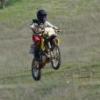Sign in to follow this
Followers
0

Juan Bautista de Anza National Historic Trail
By
Goofy Footer, in Trail closures and conditions for Southern California

By
Goofy Footer, in Trail closures and conditions for Southern California